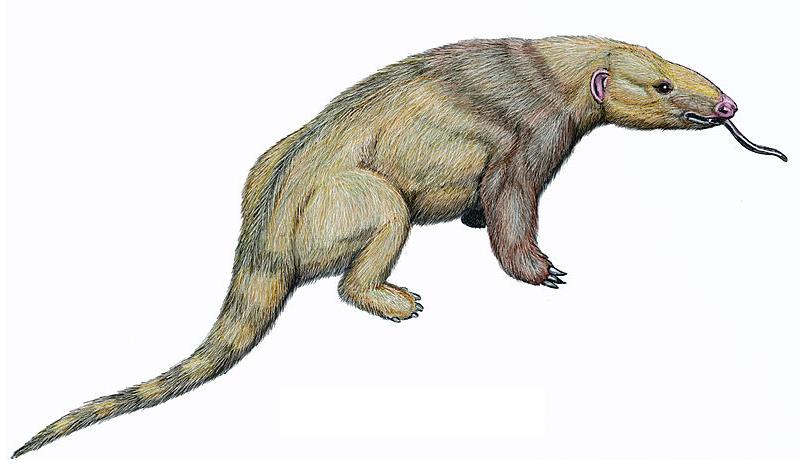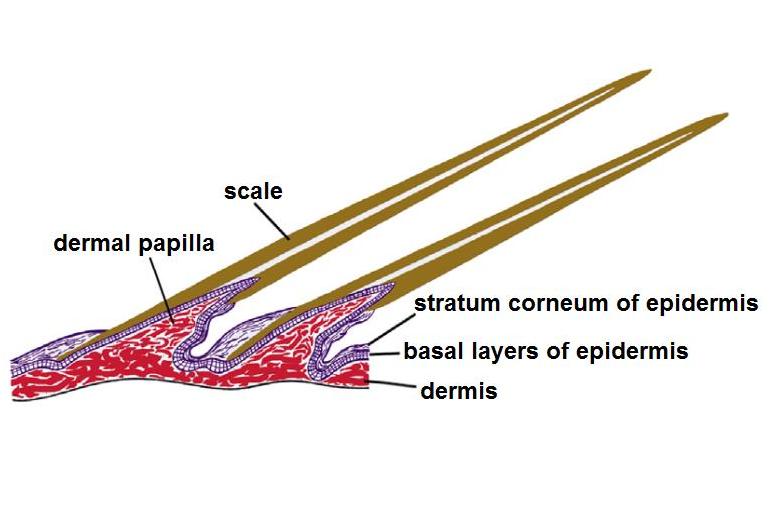|
Patriomanidae
Patriomanidae ("fathers of pangolins") is a extinct family of pangolins from superfamily Manoidea that includes two extinct genera ''Patriomanis'' and '' Cryptomanis''. Taxonomy * Family: †Patriomanidae ** Genus: †'' Cryptomanis'' *** †''Cryptomanis gobiensis'' ** Genus: †''Patriomanis ''Patriomanis'' ("father of pangolins") is an extinct genus of pangolin from extinct family Patriomanidae. It lived during the Eocene of North America and it currently represents the only pangolin known from the Western Hemisphere. The genus co ...'' *** †''Patriomanis americana'' Phylogeny Phylogenetic position of family Patriomanidae within superfamily Manoidea. References Prehistoric pangolins Prehistoric mammal families {{Paleo-mammal-stub ... [...More Info...] [...Related Items...] OR: [Wikipedia] [Google] [Baidu] |
Manoidea
Manoidea is a superfamily of pangolins from suborder Eupholidota that includes extant family Manidae, extinct family Patriomanidae and extinct genus ''Necromanis''. Taxonomy * Superfamily: Manoidea ** Family: Manidae (pangolins) ** Family: †Patriomanidae ** ''Incertae sedis'' *** Genus: †''Necromanis ''Necromanis'' ("extinct pangolin") is an extinct genus of pangolin from superfamily Manoidea. It lived during the Oligocene and Miocene of Europe. It was originally placed within family Manidae, but was eventually removed from it as more f ...'' Phylogeny Phylogenetic position of superfamily Manoidea within suborder Eupholidota. References Pangolins Mammal superfamilies {{mammal-stub ... [...More Info...] [...Related Items...] OR: [Wikipedia] [Google] [Baidu] |
Pangolin
Pangolins, sometimes known as scaly anteaters, are mammals of the order Pholidota (, from Ancient Greek ϕολιδωτός – "clad in scales"). The one extant family, the Manidae, has three genera: '' Manis'', '' Phataginus'', and '' Smutsia''. ''Manis'' comprises the four species found in Asia, while ''Phataginus'' and ''Smutsia'' include two species each, all found in sub-Saharan Africa. These species range in size from . A number of extinct pangolin species are also known. Pangolins have large, protective keratin scales, similar in material to fingernails and toenails, covering their skin; they are the only known mammals with this feature. They live in hollow trees or burrows, depending on the species. Pangolins are nocturnal, and their diet consists of mainly ants and termites, which they capture using their long tongues. They tend to be solitary animals, meeting only to mate and produce a litter of one to three offspring, which they raise for about two years. Pangol ... [...More Info...] [...Related Items...] OR: [Wikipedia] [Google] [Baidu] |
Pangolin Hardwicke (white Background)
Pangolins, sometimes known as scaly anteaters, are mammals of the order Pholidota (, from Ancient Greek ϕολιδωτός – "clad in scales"). The one extant family, the Manidae, has three genera: '' Manis'', '' Phataginus'', and '' Smutsia''. ''Manis'' comprises the four species found in Asia, while ''Phataginus'' and ''Smutsia'' include two species each, all found in sub-Saharan Africa. These species range in size from . A number of extinct pangolin species are also known. Pangolins have large, protective keratin scales, similar in material to fingernails and toenails, covering their skin; they are the only known mammals with this feature. They live in hollow trees or burrows, depending on the species. Pangolins are nocturnal, and their diet consists of mainly ants and termites, which they capture using their long tongues. They tend to be solitary animals, meeting only to mate and produce a litter of one to three offspring, which they raise for about two years. Pangol ... [...More Info...] [...Related Items...] OR: [Wikipedia] [Google] [Baidu] |
Pangolin
Pangolins, sometimes known as scaly anteaters, are mammals of the order Pholidota (, from Ancient Greek ϕολιδωτός – "clad in scales"). The one extant family, the Manidae, has three genera: '' Manis'', '' Phataginus'', and '' Smutsia''. ''Manis'' comprises the four species found in Asia, while ''Phataginus'' and ''Smutsia'' include two species each, all found in sub-Saharan Africa. These species range in size from . A number of extinct pangolin species are also known. Pangolins have large, protective keratin scales, similar in material to fingernails and toenails, covering their skin; they are the only known mammals with this feature. They live in hollow trees or burrows, depending on the species. Pangolins are nocturnal, and their diet consists of mainly ants and termites, which they capture using their long tongues. They tend to be solitary animals, meeting only to mate and produce a litter of one to three offspring, which they raise for about two years. Pangol ... [...More Info...] [...Related Items...] OR: [Wikipedia] [Google] [Baidu] |
Patriomanis
''Patriomanis'' ("father of pangolins") is an extinct genus of pangolin from extinct family Patriomanidae. It lived during the Eocene of North America and it currently represents the only pangolin known from the Western Hemisphere. The genus contains one species, ''P. americana'', which is known from six specimens, mostly from the Chadronian White River Formation of Montana Montana () is a state in the Mountain West division of the Western United States. It is bordered by Idaho to the west, North Dakota and South Dakota to the east, Wyoming to the south, and the Canadian provinces of Alberta, British Columb .... It had long digits and a prehensile tail, suggesting that it was arboreal, and its jaw was capable of opening wider than modern pangolins. Its ears and the hair between its scales were also longer than modern pangolins. Phylogeny Phylogenetic position of genus ''Patriomanis'' within family Patriomanidae. References {{Taxonbar, from=Q18818692 Prehisto ... [...More Info...] [...Related Items...] OR: [Wikipedia] [Google] [Baidu] |
Necromanis
''Necromanis'' ("extinct pangolin") is an extinct genus of pangolin from superfamily Manoidea. It lived during the Oligocene and Miocene of Europe. It was originally placed within family Manidae, but was eventually removed from it as more fossil pholidotids from outside that family were found and studied more extensively (i.e., with the discovery and study of ''Eomanis'' and '' Patriomanis'').Gaudin, Timothy J., Robert J. Emry, and Brandon Pogue. "A new genus and species of pangolin (Mammalia, Pholidota) from the late Eocene of Inner Mongolia, China." Journal of Vertebrate Paleontology 26.1 (2006): 146-159. Currently, ''Necromanis'' is placed as ''incertae sedis'' within the pholidotid superfamily Manoidea, together with the families Manidae and Patriomanidae. ''N. quercyi'' was originally placed within ''Teutomanis'' by Ameghino in 1905, but was later subsumed into ''Necromanis''. A new fossil humerus attributed to ''N. franconica'' from Quercy Quercy (; oc, Carcin , lo ... [...More Info...] [...Related Items...] OR: [Wikipedia] [Google] [Baidu] |
Eupholidota
Eupholidota ("true pangolins") is a suborder of pangolins that includes two superfamilies: extant Manoidea and extinct Eomanoidea. Taxonomy * Suborder: Eupholidota (true pangolins) ** Superfamily: Manoidea *** Family: Manidae (pangolins) *** Family: †Patriomanidae *** ''Incertae sedis'' **** Genus: †''Necromanis ''Necromanis'' ("extinct pangolin") is an extinct genus of pangolin from superfamily Manoidea. It lived during the Oligocene and Miocene of Europe. It was originally placed within family Manidae, but was eventually removed from it as more f ...'' ** Superfamily: † Eomanoidea *** Family: † Eomanidae Phylogeny Phylogenetic position of suborder Eupholidota within order Pholidota. References Pangolins {{mammal-stub ... [...More Info...] [...Related Items...] OR: [Wikipedia] [Google] [Baidu] |
Manidae
Manidae is the only extant family of pangolins from superfamily Manoidea. This family comprises three genera ('' Manis'' from subfamily Maninae, ''Phataginus'' from subfamily Phatagininae, and ''Smutsia'' from subfamily Smutsiinae), as well as extinct Fayum pangolin. Classification and phylogeny History of classification All species of living pangolin had been assigned to the genus ''Manis'' until the late 2000s, when research prompted the splitting of extant pangolins into three genera: '' Manis'', ''Phataginus'', and ''Smutsia''. Taxonomy * Family: Manidae (pangolins) ** Subfamily: Maninae (Gray, 1821) *** Genus: '' Manis'' (Linnaeus, 1758) (Asiatic pangolins) **** ''Manis crassicaudata'' (Gray, 1827) (Indian pangolin) **** ''Manis pentadactyla'' (Linnaeus, 1758) (Chinese pangolin) **** ''Manis'' sp. (''Scale_H4'' & ''Scale_H8'')Jingyang Hu, Christian Roos, Xue Lv, Weimin Kuang, Li Yu (2020."Molecular Genetics Supports a Potential Fifth Asian Pangolin Species (Mammalia, ... [...More Info...] [...Related Items...] OR: [Wikipedia] [Google] [Baidu] |
Eurotamandua
''Eurotamandua'' ("european ''Tamandua''") is an extinct genus of mammal from extinct family Eurotamanduidae that lived some 40-35 million years ago, during the middle Eocene. A single fossil is known, coming from the Messel Pit in southwestern Germany. ''Eurotamandua'' was about long. Most palaeontologists now classify ''Eurotamandua'' as a pangolin. When its fossils were first discovered, ''Eurotamandua'' was originally thought to be an anteater, as it lacked the characteristic fused-hair scales of other pangolins. ''Eurotamandua'' placement within the pangolins was made primarily because of a lack of the characteristic "xenarthran" joints found in all xenarthrans, including tamanduas. There is still much ambiguity in the taxonomy of all mammals prior to the Eocene, so there is the possibility that ''Eurotamandua'' was a primitive xenarthran. However, this is highly unlikely because all known fossil evidence indicates that xenarthrans existed exclusively in South America from ... [...More Info...] [...Related Items...] OR: [Wikipedia] [Google] [Baidu] |
Eomanis
''Eomanis'' ("dawn pangolin") is the earliest known true (and scaled) pangolin from extinct family Eomanidae (and extinct superfamily Eomanoidea) within suborder Eupholidota. It lived during the Eocene in Europe. ''Eomanis'' fossils found in the Messel Pit in Germany are very similar in size and anatomy to living pangolins of the genus '' Manis'', indicating that pangolins have remained largely unchanged in morphology and behavior for 50 million years. However, unlike modern pangolins, its tail and legs did not bear scales. According to the stomach contents of the excellently preserved Messel specimens, ''Eomanis’'' diet consisted of both insects and plants. Another early mammal discovered in the Messel Pit that was similar in anatomy and likely also had an insectivorous diet was ''Eurotamandua''. Despite its name, ''Eurotamandua'' was almost certainly not a xenarthran because it lacked the characteristic xenarthran joints present in all living and extinct xenarthrans. In add ... [...More Info...] [...Related Items...] OR: [Wikipedia] [Google] [Baidu] |
Eocene
The Eocene ( ) Epoch is a geological epoch (geology), epoch that lasted from about 56 to 33.9 million years ago (mya). It is the second epoch of the Paleogene Period (geology), Period in the modern Cenozoic Era (geology), Era. The name ''Eocene'' comes from the Ancient Greek (''ēṓs'', "dawn") and (''kainós'', "new") and refers to the "dawn" of modern ('new') fauna that appeared during the epoch. The Eocene spans the time from the end of the Paleocene Epoch to the beginning of the Oligocene Epoch. The start of the Eocene is marked by a brief period in which the concentration of the carbon isotope Carbon-13, 13C in the atmosphere was exceptionally low in comparison with the more common isotope Carbon-12, 12C. The end is set at a major extinction event called the ''Grande Coupure'' (the "Great Break" in continuity) or the Eocene–Oligocene extinction event, which may be related to the impact of one or more large bolides in Popigai impact structure, Siberia and in what is now ... [...More Info...] [...Related Items...] OR: [Wikipedia] [Google] [Baidu] |
Euromanis
''Euromanis'' ("european pangolin") is one of the earliest known pangolin genera. It lived during the Eocene in Europe. ''Euromanis'' fossils found in the Messel Pit in Germany Germany,, officially the Federal Republic of Germany, is a country in Central Europe. It is the second most populous country in Europe after Russia, and the most populous member state of the European Union. Germany is situated betwe .... Unlike modern pangolins, it did not bear scales on its body. Phylogeny Phylogenetic position of genus ''Euromanis'' within order Pholidota. References Prehistoric pangolins Eocene mammals Myrmecophagous mammals Prehistoric placental genera Cenozoic mammals of Europe Fossil taxa described in 1994 {{paleo-mammal-stub ... [...More Info...] [...Related Items...] OR: [Wikipedia] [Google] [Baidu] |

.jpg)

.jpg)
